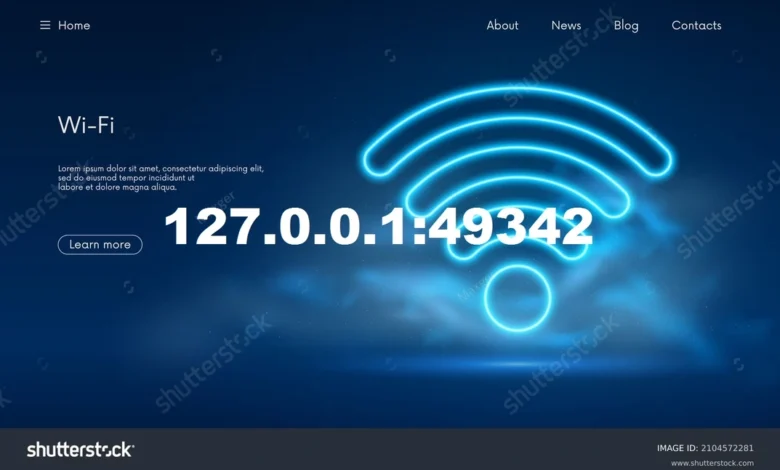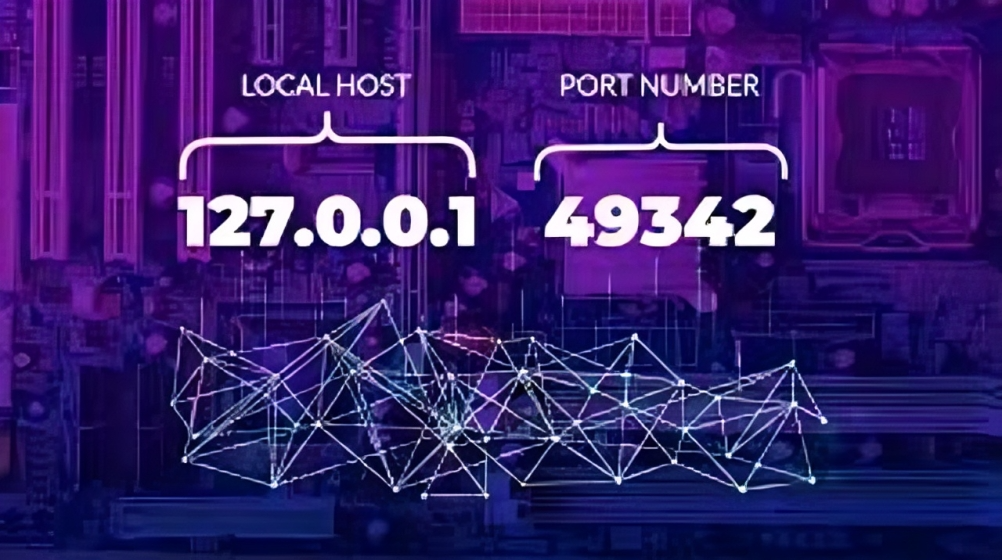Understanding the Significance of 127.0.0.1:49342 managed in Networking: A Comprehensive Guide.

127.0.0.1:49342 When it comes to networking and computing, there can be no more a controversial address than 127.0.0.1:49342; this is especially true for those who have had experience in configuring, analyzing and implementing network security and local areas. When you add this particular unique Internet address in combination with a port number frequently applied by developers and network engineers for example port number 49342 this creates another fine grain that many of the developers along with network engineers require. In this detailed article, we will dive deep into what 127.0.0.1:49342 means, what it means and why one must concern himself with it for anyone in the field of computing or software engineering.
Table of Contents
What is 127.0.0.1?
Gaining Insight into Port 49342 and What It Represents
How 127.0.0.1:49342 Works
Common Uses and Applications
127.0.0.1:49342 in Cybersecurity
Troubleshooting Issues with 127.0.0.1:49342
Proper working protocol of Localhost and Ports
Conclusion
What is 127.0.0.1?
127.0.0.1:49342.The term localhost or 0.0.1 is actually an IP address in computer networking by which the machine you are currently using answers. This IP address is very vital in network communications without leaving the host computer. In other words when you tap into 127.0.0.1 you are, in fact, connecting to the computer that you are using for the purpose of testing software, and network settings among other things.
Key Characteristics of 127.0.0.1:49342
Loopback Address: It provides the way for the developer and users to direct the traffic back to their own computer without having to passed through another network.
Local Testing Environment: It is generally employed by developers for purpose of emulating network connections so that applications could be tested in this environment.
Default Configuration: In most of the machines this address is pre set to act as the localhost and there is no need for additional configuration for testing or for networking.
Learning the Importance of Port 49342

In the context of 127.0.0.1:49342, the last three digits – 49342 represent the port. A port can now be described as a meeting point of two or more organization’s elements for the exchange of network services. In any networked application, whenever data is passed from one device to another it is received through a port.
Ports are generally labeled from 0 to 65535, and ports classified into various types like well known port (0-1023), registered port (1024-49151), and dynamic or private port (49152-65535).
Since 49342 belongs to dynamic/private range, it is often assigned to a temporary service or an application that is running on the local machine. It can be constantly changing here is a few more uses of this port for custom apps web or local servers or temp services that do not require a default port #.
Why Port 49342?
Temporary Services: These ports, such as port 49342, may be created on the fly in a given operating system to support short-lived utilities, for instance.
Custom Configuration: The applications are set up in a way that it can use those higher-numbered port numbers to avoid conflict with these well-known port numbers.
Firewalls and Security: That is why many security professionals rightfully advise to select ports in this range for own custom services because it is really uninteresting to attack exposed services as compared with attempting to find open more or less ‘standard’ ports.
How 127.0.0.1:49342 Works
When an application or service is configured to run on 127.0.0.1:49342 Often the letters and figures after the service, such as 49342 means that the service is available only within the local network and listens to port 49342. This service cannot be run by any other machine in the network for it is limited to the local machine only. For instance, a developer will use this setup when they want to test a web application/database but they don’t wish to link it to the Internet.
Here’s a breakdown of the process:
Service Binding: The application continuously connects to the loop back address 127.0.0.1 and listens for connections in port 49342.
Local Communication: Only the data that the application sends to theovid:49342 stays inside the local device and does not pass through the external networks.
Testing and Debugging: It is possible to communicate with the application, as if it was deployed on a real host, while checking its capabilities and vulnerabilities, without being exposed to the outside world.
Common Uses and Applications
Perceived development environments at the local level
127.0.0.1:49342 was reported to be used commonly in localized development environment. For example, a developer might use a local web server that is Apache or Nginx to listen to port 49342. This enables them to develop and run applications on the website environments without disturbing the public.
Database Connections
Popular databases like MySQL, PostgreSQL, and MongoDB can be set to listen on 127.0.0.1 using any port for instance 49342. This is good when running queries locally especially when you are defining database connections that will be put later on a production environment.
Web APIs and Microservices
In microservices architectures, developers can launch several services locally, and each of them on a different port. Assigning a service to 127.0.0.1:During the testing phase, the local machine can only connect to this program hence reducing the risk of interacting with other networks: (49342)
127.0.0.1 in Cybersecurity
While 127.0.0.1 is predominantly used for local testing it also plays an important part in terms of security. Of these, the main one is protection against unauthorized access to services. As 127.0.0.1 only allows the local machine to connect to the IP address all the services trying to open a port such as 49342 behind 127.0.0.1 are not accessible by other external users.
Security Implications
Isolated Services: Some of the services that are controlled by 127.0.0.1:49342 can only be accessed internally, and this is good for defense purposes.
Misconfigurations: However, if an application is set up to respond on an external interface, different from 127.0.0.1 or 0.0.0.0, it is possible to let potential attackers access data or functionalities which should not be opened.
Protection against DoS attack and port scanning
The suggestion is to employ higher port numbers, such as 49342 for non-critical services, because automated attack procedures usually include scanning the range of low port numbers.
Troubleshooting Issues with 127.0.0.1:49342
Sometimes, users might encounter issues while working with 127.0.0.1:49342. Common problems include:
Port Conflicts: This prevents another service which you may be utilizing from using port 49342 and the chance that your application will bind the port will lead to errors.
Firewall Restrictions: In fact, except for DMZ segment, the traffic going to 127.0.0.1 almost always goes through bypasses firewalls on the external interface but there might be local firewalls that block some of the ports by default.
Application Misconfiguration: If an application is supposed to be bound to 127.0.0.1:49342 or so, it does not work as necessary when it is bound to a different address or port.
Some Guidelines you need to follow when working with Localhost and Ports
To make the most out of working with 127.0.0.1:49342, below are some of the best practice that should be observed:
Keep Services Local: It is always recommended to map development or testing services on 127.0.0.1 so that they cannot be exposed by a mistake.
Use Higher-Numbered Ports: When non-critical or temporary services are used, the port numbers 49342 and above should be used in order to avoid the conflict of the ports.
Regular Monitoring: Clients can be checked now and then to determine which ones are connecting to which ports in that machine to reduce on the conflicts or insecurity that may arise.
Conclusion
That is why 127.0.0.1 and port 49342 are an important part of contemporary computing environment, especially for developers and network engineers. By understanding how 127.0.0.1:In just 49342 works you can create local environments for the application, securely test their functionality and assure setting your services correctly. Basically, relying on localhost for local-only services could dramatically improve both security and reliability of the development process.
By adhering to best practices and keeping security considerations in mind, you can ensure that your use of 127.0.0.1:All your networking and development processes continue to be efficiently handled by 49342 for your benefit and safety.



